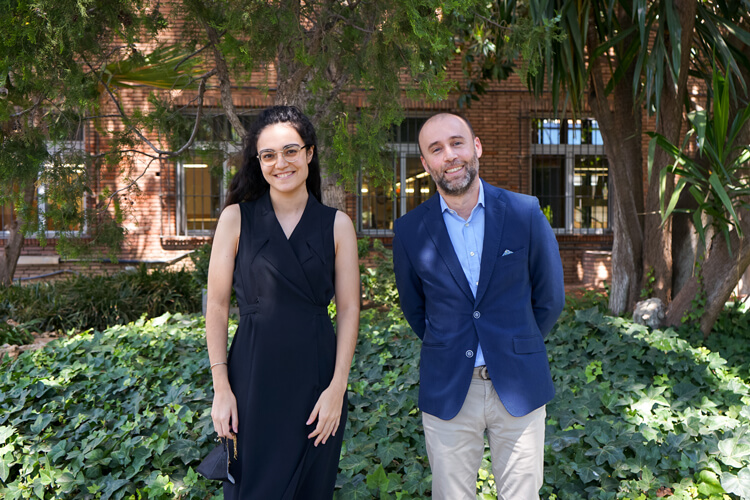Microneedles for immunotherapies

The curative potential of immunotherapies has revolutionized the treatment of certain diseases such as cancer and autoimmune disorders thanks to their ability to stimulate or suppress immune responses. Nonetheless, the widespread implementation of these therapies is challenging due to their toxicity, low efficacy, and unwanted off-target effects, effects that increase when systematic and non-directed releases are performed.
Moreover, the ability of nanomaterials to redirect immunomodulatory drugs to target tissues is well known, thus these platforms designed with biomaterials could address some of these issues.
Within this context, Dr Núria Puigmal defended her doctoral thesis at IQS, under the title Skin-targeting platforms based on poly (β-amino esters) for local immunotherapy. She conducted her thesis within the Materials Engineering Group (GEMAT) at the IQS School of Engineering, and was supervised by Dr Víctor Ramos Pérez in collaboration with the Artzi lab at the Harvard Medical School in Boston under the supervision of Dr Natalie Artzi.
As part of her research, Dr Puigmal developed new drug delivery platforms directed at the skin with the aim of modulating the immune system at the local level. The materials proposed for developing these new devices are poly(β-amino esters) (pBAEs) as they are biocompatible and biodegradable materials that are easily synthesized and have vast chemical flexibility. They were, therefore, excellent candidates in terms of testing their use in transdermal applications in three fields of action including: vaccination with nucleic acids, cancer immunotherapy, and adoptive therapy.
Transdermal microneedles
In collaboration with the Artzi lab, Dr Puigmal has developed innovative transdermal microneedles made with hydrogels and hyaluronic acid which are fit into a small patch that adheres to the skin.
These microneedles have a twofold function. On the one hand, they release therapeutic loads. On the other hand, they allow the extraction of interstitial fluids from the skin with numerous biomarkers which enable the response to the therapy to be monitored in situ at the same time.
Its efficacy has also been tested in cancer treatment therapies, where the new microneedles loaded with pBAEs have been able to reduce the size of tumours, as well as to modulate the tumour microenvironment and the immunological composition.
Finally, the microneedles have also been used as a platform to restore immune balance in skin transplants as a temporary dressing for patients with severe burns. Microneedles can deliver immunomodulators locally while sampling immune cells to monitor the response to the therapy.1
In summary, this collaborative research – as a bridge between medicine and bioengineering – has made it possible to make minimally invasive devices such as the microneedle patches developed, which are ready to be used at the clinical level.
Beauty at a microscopic scale
Along with two other researchers from the IQS Bioengineering group at MIT, Dr Puigmal received one of the 2021 KI Image Awards from the Koch Institute, the largest cancer research centre at MIT. Presented in March 2021, the awards seek to recognize the extraordinary visuals that are produced through life sciences and biomedical research at MIT.
The winning photo, “To the point: Microneedles for Diagnosis and Drug Delivery” presents a microscope image of a patch with the microneedles developed by this group of researchers.
This project has been conducted with the support of IQS Grants for PhD studies.
[1] N. Puigmal, P. Dosta. Z. Solhjou, K. Yatim, C. Ramirez, J.Y. Choi, J. B. Alhaddad, A.P. Cosme, J. Azzi, N. Artzi, Microneedle-Based Local Delivery of CCL22 and IL-2 Enriches Treg Homing to the Skin Allograft and Enables Temporal Monitoring of Immunotherapy Efficacy. Advanced Funcional Materials, 2021


